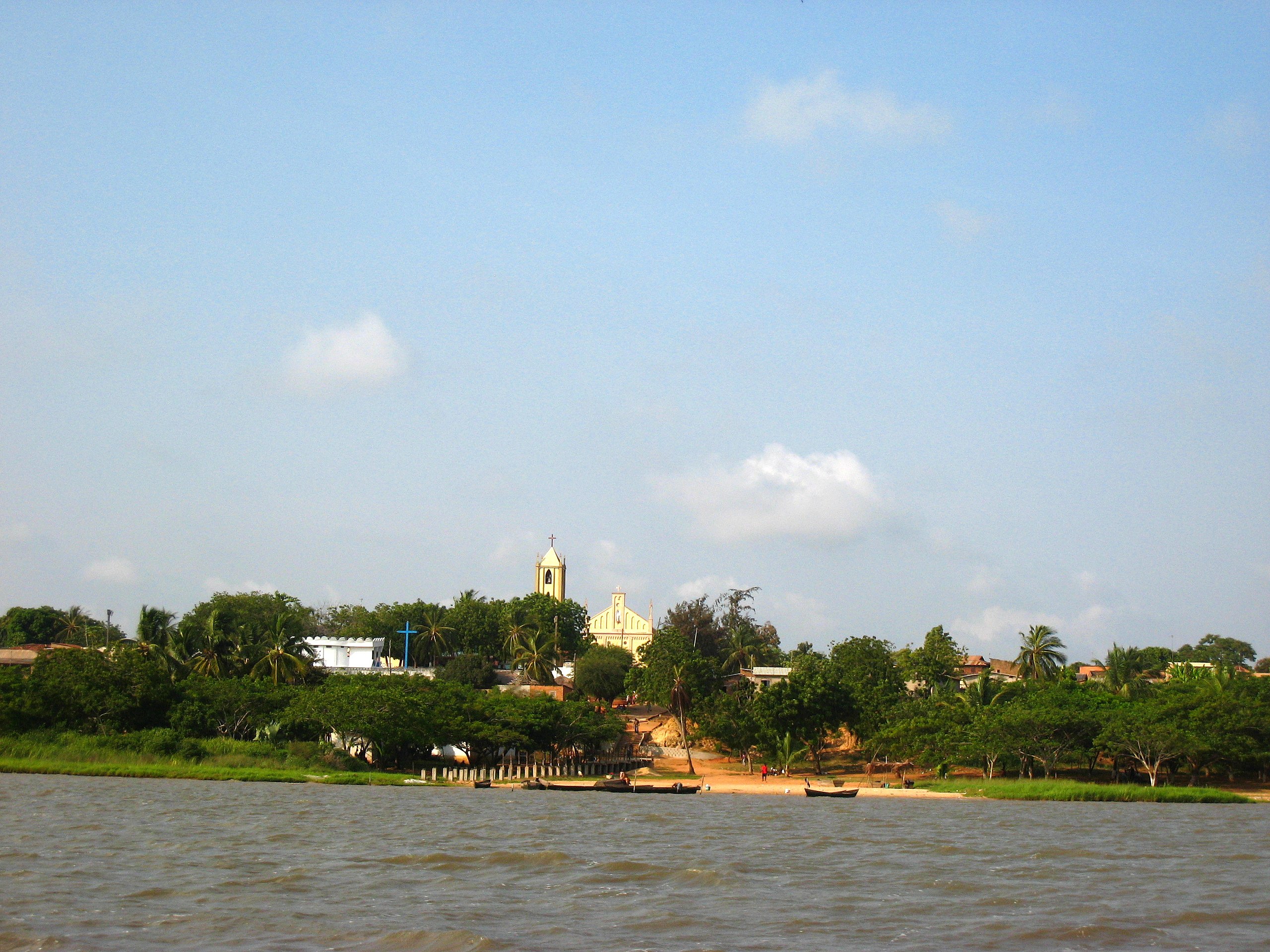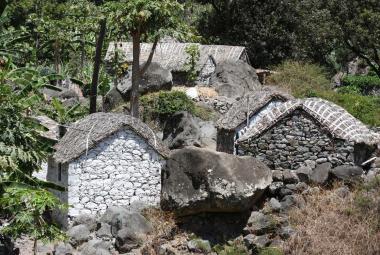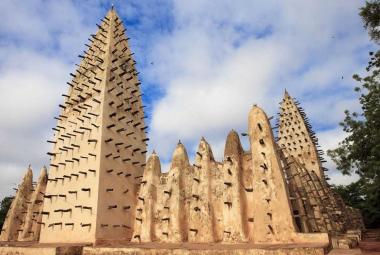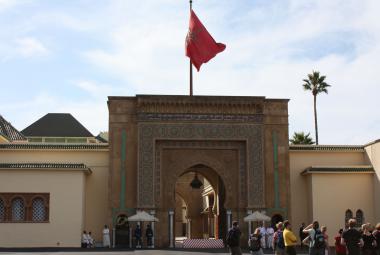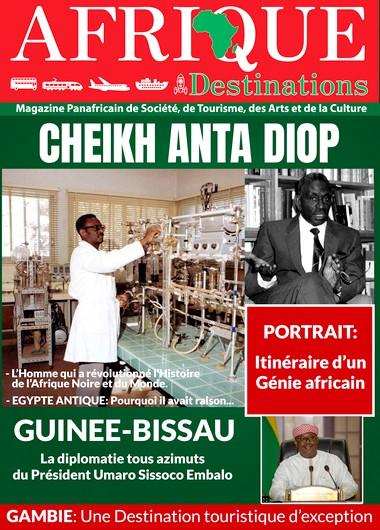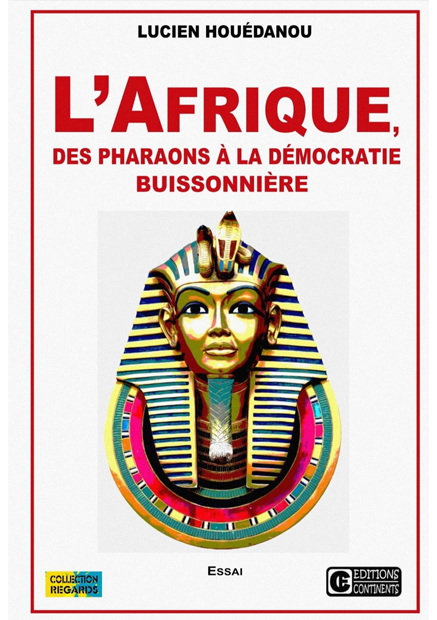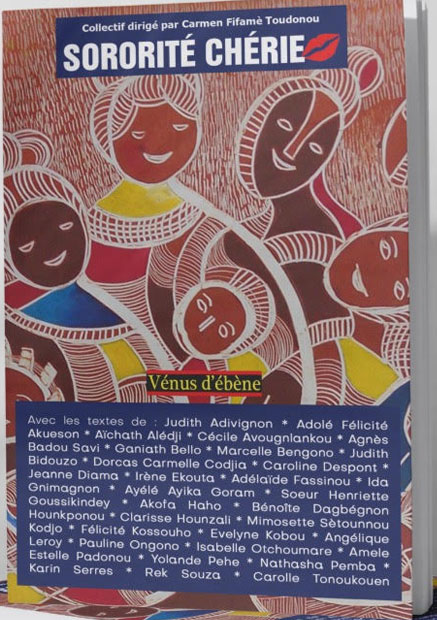Every year, between September and October, the high priests go to the lake to look for the sacred stone whose interpretation of the color by the oracle will predict whether the year will be good or not. Marcus Boni Teiga took a dive into the world of traditional animist cults in Togo in 2007. Here is his report in Anecho, on the occasion of the traditional celebrations of the new year.
The first contact with Togo, when you come from Benin Republic, is in the border town of Aného – or Anecho, depending on whether you write in French or German. I like the discreet charm of this bustling city which was the second capital of the country during the time of German colonization, from 1887. Its activity only weakens on Sundays, when the traffic slows down or when many of its inhabitants go to worship, whether they are Christians or followers of voodoo. On other days, the streets are teeming with people: people who travel, who sell manufactured products or foodstuffs on the sly, or even people who seek to earn their daily subsistence with the help of odd jobs - porters, canvassers, guides, etc. The big trucks that travel the Cotonou-Lomé international road along the coast and wait to cross the border bring their share of customers in search of relaxation to a multitude of drinking establishments and small restaurants - commonly known as the “maquis”. This is especially the case around the Yessouvito bus station, where waves of music and concerts of “tympanic” horns (Beninese expression to speak of a deafening noise) mingle, some emitted by the surrounding bars, others by taxi cohorts.

Rather than linger in these crowded places, I head for Glidji. At the junction located at the entrance of the village, the driver of my taxi turns left to take the direction of Togoville. There the paved road ends. The laterite road that follows it winds through the humid and green lowlands that characterize this area. Along the way, the traveler discovers a vegetation of tall grass, stunted baobabs and coconut palms. The road, about forty kilometers long, is mainly used by motorcycle taxis, which have become the preferred means of transport for the populations. Any vehicle can drive on this lane, but on condition that the driver has his eyes fixed on the potholes rather than on the green plain in the rainy season.
While crossing the villages located at the edge of the road, an observation jumps out at me: we see there graves carefully arranged and maintained. A characteristic use of the Guin-Mina-Ewé cultural area, which goes from Ghana to Benin Republic (Editor's note: Even as far as Nigeria in the current state of historical knowledge). And where voodoo has the right of citizenship, as evidenced by the altars that we meet here and there. We then come across a railway line. “These rails leave from Hahotoé for Kpémé”, explains my driver, Akpe Moévi. The main phosphate mine in Togo is indeed in Hahotoé, and it was necessary to build a railway to transport the ore to the wharf of
Kpémé to ship it abroad. As soon as we cross the tracks, I see a few houses hidden by
trees: it's Togoville..
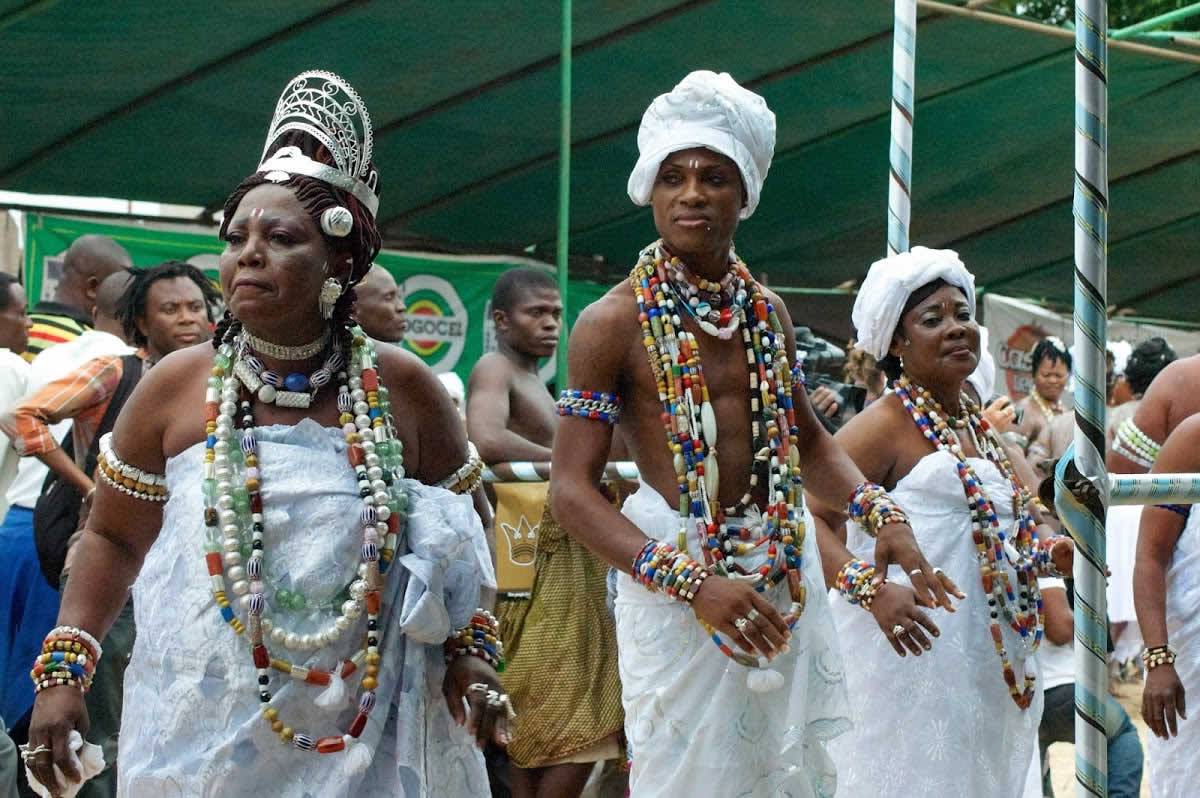
As we advance, the city lets itself be discovered gradually, without noise. Rectangular huts with rusty sheet metal roofs follow one another, leaning against each other along the track. We pass in front of the Nachtigal hotel, go through a few alleys and return to park the car in front of the cathedral of the Marian sanctuary Notre-Dame du Lac Togo which overlooks the lake, with the key to a wonderful panoramic view of Agbodrafo, baptized Porto Seguro by the Portuguese navigators who once engaged in the slave trade in these places. I can't resist the temptation to go down the stairs to the shore of this lake which gave its name to the country. Just enough time to have a little chat with
the few Togovillois who roam the beach and a few young boatmen who are waiting for potential customers. How beautiful the weather is on the shores of Lake Togo! “We, every day, come to the beach. As soon as we get a little bored at home, we go out to savor the fresh air of the lakeside while talking about our future or our daily realities. It is our way of chasing idleness and killing time”, says Tèko, a young “school dropout”.
From the bank, the dense forest of coconut groves and the sacred forest, in an arc on the side of Agbodrafo – where the hotel Le Lac (The Lake Hotel) is nestled – make up a beautiful postcard. Canoes glide over the water of the lake like a bow on a violin. The city is in fact a village drowned in the vegetation of tall trees and cornfields. She appears to me as the twin sister of the city of Ouidah, in Benin Republic. In two hours, it is possible to go around it. For the visitor that I am, an enigma remains to be solved –the reason which had prompted the Germans to sign a treaty of protectorate with an envoy of King Mlapa of Togoville. For the record, it was the diplomat Gustav Nachtigal
who signed this treaty which granted exclusive commercial rights to the Germans and which led to the creation of Togoland. This is how the name of the small village of Togo became that of the whole region and the village was renamed Togoville.
Togoville strangely resembles a museum of which all the rooms should be dusted off. A dull, quiet town despite the existence of a few drinking establishments. It is a place where it is good to retire to rest, write or meditate. Exactly like in Glidji, where I got used to it a few years ago. The visitor can discover in Togoville the house of the descendant of King Mlapa and see the tomb of the latter as well as vestiges of the past. Next to the church there is a monument dedicated to the events of 1884, which marked the signing of the protectorate treaty. Very close to the monument, there is La Mouette, a small cannon which, according to people, belonged to Nachtigal's boat. In Togoville,
it is as if the clock of history had stopped at a bygone era. Life continues as it was a hundred years ago. And you can admire the beautiful German church, built in 1910. It is adorned with portraits of African saints as well as a statue of Notre-Dame du Lac Togo, the patron saint of the village.
But Togoville is also renowned as a high place of animist practices. Followers come from all over southern Togo to study and practice their Voodoo religion. Evidenced by the many altars and other wooden sculptures or clay statuettes that can be found in front of several houses. The traditional festival of Yèkè-Yèkè, which marks the beginning of each new year, offers the natives of Togoville the opportunity to break with the tranquility and the monotony of their existence. The small town comes alive with the return of its daughters and sons from the diaspora who engage in hectic demonstrations
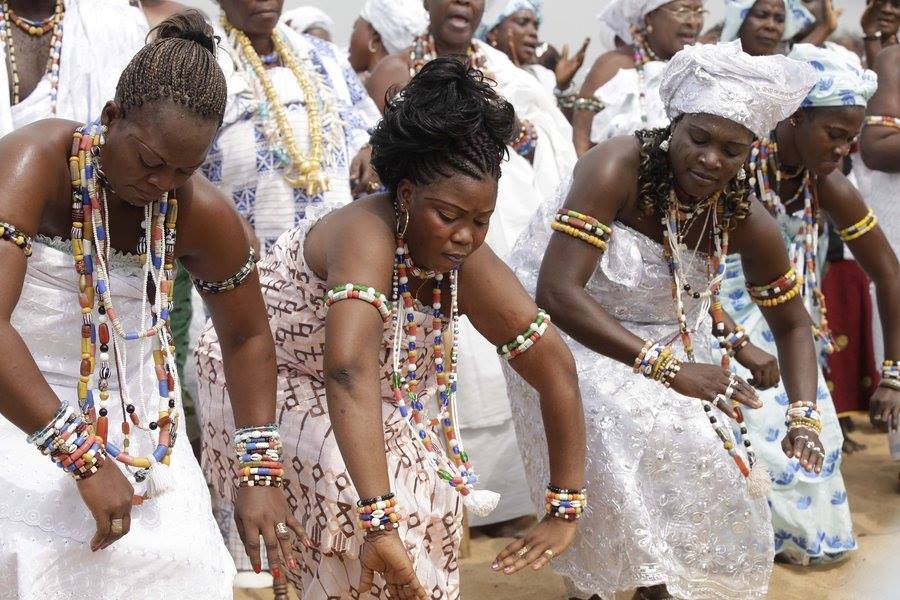
In the Guin-Mina-Ewé area, people have celebrated the New Year since the dawn of time – a practice that has long been common in many African cultures. Every year, between September and October, the high priests go to the lake to look for the sacred stone whose interpretation of the color by the oracle will predict whether the year will be good or not. This is followed by a series of rituals to ward off bad luck and demonstrations of rejoicing. Today, the practice of Yèkè-Yèkè goes beyond the framework of the Guin-Mina-Ewé area and extends to other neighboring peoples and friends. The sacred stone ceremony and the trances that accompany it connect the living to the invisible world. People eat, drink and dance to thank God, the spirits of the ancestors and the deities for the year that has ended but also for the one that is beginning. According to custom, the bottles of drink intended to accompany the offerings to the ghosts of the ancestors are exhibited in the room of the Yohomè spirits. Poultry, sheep are immolated by the high priest – or the high priestess – responsible for the ceremonies in each family, starting with the royal family and that of the dignitaries and other privileged persons of the community. The celebrant presents each offering to the spirits of the ancestors materialized by a voodoo [a clod of earth which represents the interaction between the ancestors and God] inside the chamber of the spirits. Water is poured on the ground to implore the clemency of the spirits of the ancestors so that they facilitate the year for their descendants here below. The celebrant drinks the water, followed by the other members of the community who do so in turn. The same ritual follows with alcoholic drinks intended for the ghosts of the ancestors: the goal is to destroy all the enemies of their descendants on earth and to preserve them from evil. Non-alcoholic sweet drinks are then offered to ask the ghosts of the ancestors to spread on their descendants the sweets, the good things of existence: health, money, happiness.
Finally, the shares intended for the ghosts of the ancestors are taken from the immolated animals. It is only after these ceremonies that all members of the community can begin to feast. People feast and indulge in songs, dances and other popular festivities.
Apart from the Yèkè-Yèkè festivities, the only other event that disturbs the tranquility of Togoville remains the commemoration of the anniversary of the cathedral of the Marian sanctuary of Notre-Dame du Lac Togo, which takes place on November 4. “People come from all over the world to take part in this celebration. Especially Europeans and the children of Togoville living abroad”, says a young person who speaks of it as a great Christian celebration which follows the great celebration of Yèkè-Yèkè. Another to resume, not without pride: “Even Pope John Paul II came to visit Togoville. It was in the 1980s. If you knew how happy we were all to welcome him, whether we were Christians or followers of the voodoo cult – you would better understand why we live here in good understanding, all religions combined.”
By Marcus Boni Teiga



